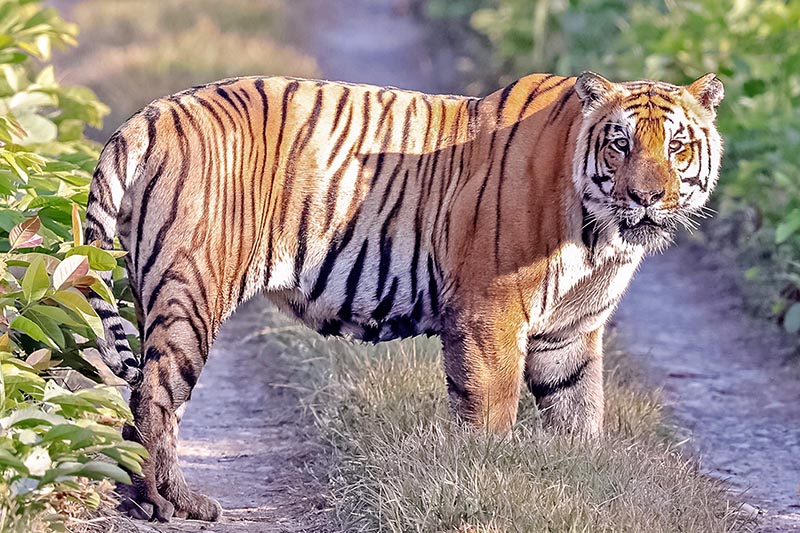Phase I national tiger census completed
Kathmandu, December 19
The Department of National Parks and Wildlife Conservation has completed the first phase of tiger census through ‘camera taping’ in Chitwan and Parsa national parks and has started the process in Banke and Bardiaya National Park.
Nepal has been conducting tiger census every four years since the government signed an agreement in the 2010 Global Tiger Conference in Russia which states that the number of tigers must be doubled by the end of 2022.
Nepal is undertaking conventional ‘mark and recapture’ technique which is an accepted method worldwide, according to an ecologist Laxman Prasad Poudyal of DNPWC. “Though the conventional method of conducting tiger census is often hectic and time consuming, it gives 95 per cent accurate results,” Poudyal said.
The first step of census starts with camera placement. Total area of a national park is divided into hundreds of grids of two square kilometres. A pair of still and video infrared motion sensor cameras is then placed in each grid which automatically takes pictures and video for 10 seconds whenever there is any movement in front of the cameras.
According to the DNPWC, the office has divided Chitwan and Parsa national parks into 942 grids, Banke and Bardiya national parks into 686 grids and Suklaphanta Park into 260 grids. All these grids will be surveyed by scientific cameras for 16 days and 15 nights taking pictures of every single movement.
Researchers collect visuals and photographs captured by those cameras and segregate the images. They examine each snapshot manually and then analyse tiger’s stripe patterns which, as per Poudyal, are different from each other just like fingerprints.
“Thousands of photos and videos will be segregated, and a very meticulous study will be undertaken as similar stripes are found in many tigers” Poudyal said.
The number of tigers will be then determined through a worldwide accepted mathematical process called ‘mark and recapture.’
In this method, identified numbers of tigers are marked and calculated with certain formula with total number of identified and unidentified numbers of tigers. The number is also verified using various software — ‘capture’, ‘space cap’ and ‘secar’.
The census report of 2010 showed there were 121 adult tigers in the country, and the number increased to 198 in 2013. This data, however, does not include the old tigers and new born cubs, according to DNPWC officials.
DNPWC officials said the census will also determine the number of animals tigers hunt for food like, barking deer, swamp deer, spotted deer, sambar deer, hog deer, wild boar and blue bull.
Poudyal said, “Tigers are highly prioritised in conservation, though there are many other endangered species, because conservation of tiger means conservation of all levels of ecology.”
READ ALSO:
- Tiger census begins today






